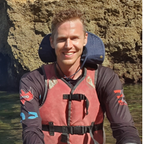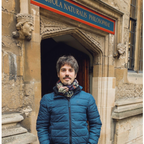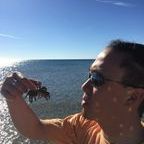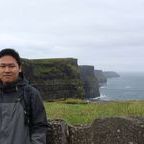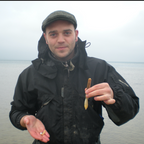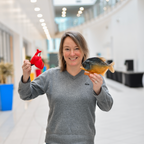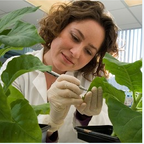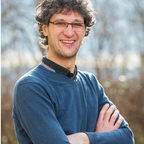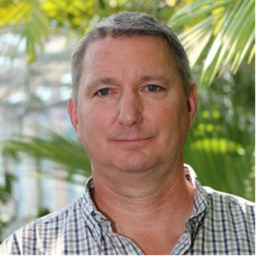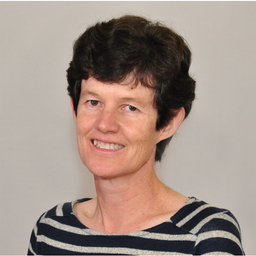Animal
A1 - Senescence in a changing world: ageing-related mechanisms in ectotherms
Session Length
1 day (Wednesday 5th July)
Session Description
Ectotherms are highly vulnerable to environmental variation, which likely explains the vast number of ectothermic species under a certain risk of extinction. In addition to the low capacity of ectotherms to thermoregulate, their life cycle often includes abrupt developmental transitions (such as metamorphosis, undergone by 80% of existing species, all of which are ectotherms) that are thought to be costly. Despite the dramatic impact of global change on the health and fitness of ectotherms, we do not fully understand yet the mechanistic causes behind that phenomenon. Mechanisms such as oxidative stress, telomere dynamics, hormone secretion, microbiome profile, or the expression of certain genes, are known to mediate ageing processes. Therefore, those and other pathways arise as good candidates to understand the impact of global change on the senescence, health, and resilience of ectotherms coping with environmental harshness. Overall, this session aims to promote the exchange of ideas between evolutionary ecologists and experimental biologists working in a number of taxa (arthropods, fish, amphibians, lizards), facing a number of environmental conditions (biotic or abiotic), and measuring a considerable number of physiological and genetic parameters.
Session Aims & Objectives
The main goals of this session are: i) to understand whether environmental stress impacts on the ageing related mechanisms of ectothermic species, ii) to explore the possible causal links between those ageing pathways and fitness-related traits in ectotherms, iii) to give insights into the possible role of developmental transitions (e.g., metamorphosis) in buffering/enhancing environmental stress. During the days of the conference, we will organise a lunch and a dinner with all the speakers of the session, and with other colleagues that want to join us, to promote networking and the development of collaborative ideas.
A2 - Evolutionary ecology in extreme environments
Session Length
1 day (Tuesday 4th July)
Session Description
Extreme environments are abundant on Earth, and are characterised by the presence of physicochemical conditions that are considered unsuitable for most living organisms. These places include areas where naturally occurring conditions are close either to the upper or lower level often considered suitable for life (e.g. extreme high/low temperatures, low precipitation, low oxygen levels…), and areas impacted by human actions (e.g. polluted by heavy metals, pesticides, radioactive substances…). To cope with such stressful conditions, organisms have often evolved responses that can be either adaptive or maladaptive. Understanding the mechanisms behind these responses is a fundamental question in evolutionary ecology and physiology.
Organisms living under extreme conditions provide ideal models to understand life's inherent capacities and limitations. Extreme environments can be used as systems for an integrative study of physiological adaptation, as their selective regimes are clearly defined and ca be experimentally replicated, enabling hypothesis-driven tests of effects at all levels of biological organization.
The session will explore our current knowledge on the different strategies and mechanisms developed by organisms exposed to extreme environments. We will encourage submissions from researchers working on physiology (e.g. metabolic rate, thermal adaptation, immune function), life-history (e.g. growth and development rates) and genetics/genomics in extreme environments, and including mechanisms thought to facilitate life under extreme conditions (e.g. gene expression, microbiota, hormonal control), as well as its impact of biomarkers of individual condition and ageing (e.g. oxidative stress, telomere length, mitochondrial function). We aim to include talks on a wide variety of animal taxa, ranging from marine and freshwater invertebrates to terrestrial vertebrates.
Session Aims & Objectives
Our primary aim is to include timely research on phenotypic, physiological, and genomic responses to extreme environments. This includes the study of the machinery allowing organisms to adapt to chronic exposure to stressors, as well as to examine the consequences of this exposure. Moreover, such a synthesis will generate outstanding questions in the field, and will help us to better forecast organism's responses to environmental change. That synthesis may be reflected on a Comment paper that potentially will be published in one of the SEB journals.
The proposed session will particularly invite researchers on novel questions, e.g. (i) still overlooked mechanisms in this field such as the role of genomics, metagenomics, and epigenetics in the adaptation to extreme life conditions, or (ii) overlooked consequences of extreme environments on the life-history and physiology of organisms (e.g. altered metabolism, ageing…). These questions will have the potential to inspire future research in the field.
Finally, we aim to identify taxa- and stress-specific patterns in organisms living in extreme environments. Some of the suggested invited speakers have broad experience in the field, thus we expect to include talks showing how a broad range of stressors impact on a large number of species and taxa. Assuming a wide range of taxa and stressors being presented in the proposed session, we will have the opportunity to reveal previously undetected emerging patterns. These can be further discussed in separate breakout sessions during the conference with researchers interested in similar taxa or stressors.
A3 - Masters of none: the impacts of multiple stressors on performance in aquatic organisms
Session Length
1 day (Thursday 6th July)
Session Description
Aquatic organisms often encounter dynamic environments with continually shifting conditions. With global climate change, the frequency, intensity, and duration of environmental stressors are increasing, and often occur simultaneously. To acclimate and survive in the face of multiple stressors, organisms must employ flexible responses, from altering cellular mechanisms to changing an individual’s behaviour – sometimes at the cost of other physiological functions. This session will explore the ability of aquatic organisms to cope with multiple co-occurring stressors, and how the presence of one stressor can influence an organism’s ability to tolerate a secondary or tertiary stressor.
Session Aims & Objectives
The overall objective of this session is to highlight the work of trainees and early career scientists. Furthermore, with this session we aim to bring together scientists working on different aspects of performance (from omics to behaviour) to engage in collaborations that take an integrative approach to multi-stressor work.
A4 - Mechanics of mechanoreception across scales and kingdoms
Session Length
2 half days (Thursday 6th (PM) and Friday 7th July (AM))
Session Description
From the metaphorical spider sense, to plants acting on mechanical stimuli, like "mimosas" and Venus fly traps, almost all organisms use mechanical input. From the lateral line organ in fish, to elephant feet and infra-sound communication, sound perception is a complex mechanical transduction process, which is instrumental in a wide variety of behaviours from mating to predation. Mechanical feedback loops also play an important role in locomotion, in knowing body position and surrounding fluid dynamics.
Session Aims & Objectives
Promoting interdisciplinarity by combining plant and animal (vertebrate/invertebrate), as well as locomotion and sensory research. There will be synergies in terms of methodological approaches and a great potential for initiating future collaborations.
A5 - Insect osmoregulation
Session Length
1 day and 1 half day (Thursday 6th and Friday 7th July (AM))
Session Description
Most living species are insects, and their success can be attributed in large part to an ability to adapt a relatively simple body plan to provide effective homeostasis in a wide variety of niches. The excretory cycle in insects is operated by the Malpighian (renal) tubules and hindgut, operating in concert. This session will look at insect osmoregulation from three angles:
- molecular physiology of ion transport and its control
- comparative osmoregulation across insect diversity
- homeostasis under environmental stress
These previously areas have hitherto been largely independent, and deserve the opportunity to interact more.
Session Aims & Objectives
The aim is to bring together both leaders and early career researchers from diverse academic and geographical backgrounds, in order to inspire the next generation of workers in the field. At present, we have representation from Europe, North America and Asia, and a 25% female/male speaker ratio; PIs will be encouraged to nominate diverse alternates if they are unable to attend, so the representation can be expected to change as the speaker list firms up.
A6 - Bright nights with dark consequences: the evolutionary ecology of coping with light pollution
Session Length
1 day (Wednesday 5th July)
Session Description
The increasing rate of urbanization is causing drastic changes in the environment, with brighter nights due to artificial lighting being one of the most ubiquitous urban stressors. Worryingly, not just urban environments, but the surrounding rural areas are also affected by light pollution, e.g. due to the skyglow effect. While the last few decades witnessed a surge of research into effects of this relatively novel stress factor, we still lack insight into underlying mechanisms of how light pollution shapes phenotypes, as well as potential consequences beyond the individual fitness.
The session will explore effects of light pollution, in particular artificial light at night, on organismal fitness. We encourage submissions from researchers working on how physiological (e.g. metabolic rate, immune function), life-history (e.g. growth and development rates) and behavioural traits (e.g. phototactic behaviour) react to light pollution. The session will particularly focus on the mechanisms of how light pollution shapes these traits (e.g. via gene expression, gut microbiota, hormonal control). We further invite submissions, empirical or theoretical, that aim at translating these results into impacts on populations, communities and ecosystems, and explore effects of light pollution within an eco-evolutionary dynamics framework. We aim for the representation of a wide variety of taxa, including from terrestrial as well as from the less-studied aquatic systems.
Session Aims & Objectives
Our primary aim is to synthesize the current advances in the study of mechanisms and consequences of responses to light pollution. Given the equivocal findings in this relatively young field (e.g. light pollution increasing / decreasing phototactic behaviour), general emerging patterns will be of great value for researchers. Moreover, such a synthesis will generate outstanding questions in the field.
Another aim is to highlight novel/understudied mechanisms and consequences of light pollution. The here proposed session will particularly invite research on novel questions in three areas: 1) understudied response variables and mechanisms (e.g. the role of gut microbiome and epigenetics in coping with light pollution), 2) understudied potential impacts of light pollution on higher biological organization levels (e.g. from individual to communities), and 3) understudied potential impacts of light pollution on energy and nutrient fluxes between ecosystems (e.g. aquatic-to-terrestrial). These will have the potential to shape future advancements in this field.
Finally, we aim to identify taxa- and stage-specific patterns in responses to light pollution. Assuming a wide range of taxa and life-stages being presented in the proposed session, we will have the opportunity to reveal previously undetected emerging patterns. These can be further discussed in separate breakout sessions during the conference with researchers interested in similar taxa or stressors. Especially interesting will be the shared / unique patterns between the responses of aquatic and terrestrial systems, given the two habitats distinctively modify the physical attributes of light. Similarly, early vs. late life stages may respond differently to light pollution, which will have serious implications for the management of human-induced impacts on nature, including for conservation efforts (e.g. the role of light pollution in the recently documented insect decline).
A7 - Rapid evolution of invasive populations due to anthropogenic changes
Session Length
1 day (Thursday 6th July)
Session Description
It is crucial to understand what governs the growth and spread of invasive populations colonizing novel environments to better predict species responses to global changes, including range shifts in response to climate and anthropogenic changes. Rapid and parallel evolutionary processes can speed up growth rates and range expansion within a few generations notably for peripheral populations.
Session Aims & Objectives
Biological invasions constitute a major feature of the Anthropocene. Within ecosystems that are deeply constrained by human activities with, therefore, major environmental changes such as chronic pollution and disturbances, understanding the rapid evolutionary changes that can occur (genetic range shifts, preadaptation, maladaptation…) is a key element to better predict and potentially conserve the actual biodiversity.
A8 - Keeping the pace: integrating mitochondrial and cellular bioenergetics to whole-animal fitness in a changing environment
Session Length
1 day (Tuesday 4th July)
Session Description
The environmental conditions experienced by an organism affect most aspects of their physiology and biochemistry. Maintenance of energy balance is critical to survive in the face of a changing environment. The primary method of energy production for most organisms is the generation of ATP by mitochondria. Therefore, changes in temperature, oxygen availability, and food sources, among others, will alter the capacity of mitochondria to support the necessary energy output for individuals to sustain life. Mitochondria are also involved in other processes such as thermoregulation, signalling, and biosynthesis. Thus, adjustments and adaptations of the mitochondrial phenotype and/or genotype are necessary to survive in the face of environment challenges, both for ectotherms and endotherms. The objective of this session will be to explore the current knowledge on mitochondrial plasticity and adaptations that allow animals to cope with environmental changes. This could include the modulation of mitochondrial metabolism through functional and/or genetic changes, including Mito nuclear coevolution.
This session aims to promote the sharing of knowledge among scientists from a wide range of disciplines (e.g., evolutionary biology, animal physiology, behavioural ecology, and biochemistry). We particularly encourage studies on the causes and consequences of mitochondrial energy production, and the biochemical or physiological pathways that are associated with energy production and organismal performance.
Session Aims & Objectives
Therefore, the major aims and objectives of this session is to bring together key scientists in the field to present their latest research data and to open new research directions through open discussions in order to link new disciplinary fields such as Conservation Physiology, Rapid evolution and Invasive Animal Alien Species.
A9 - Species interactions and their role in experimental physiology: bringing back the BIO
Session Length
1 half day (Thursday 6th July (AM))
Session Description
Experimental biologists interested in environmental stressors typically carry out their research in carefully controlled laboratory settings. While this allows for a more precise understanding of physiological mechanisms, laboratory experiments are inherently removed from ecologically reality, and are, thus, abstractions of what organisms in the wild experience when faced with stressful environments. Biotic interactions, including inter/intra specific competition, predation, parasitism, mutualism, herbivory, sociality, etc. have the potential to modulate the molecular, cellular, and whole-organism responses of individuals to environmental stressors in ways that researchers often overlook. This can have dramatic consequences on the way in which researchers interpret and extrapolate the results of laboratory studies to a broader ecological context, and limits our ability to predict the outcomes of global change on wild populations (UN SDG 14- Life Below Water; 15- Life on Land). The goal of our session is to bring together researchers who are attempting to put the BIO back into studies in experimental biology by explicitly incorporating biotic interactions into experiments testing the impacts of environmental stressors (e.g. temperature, pollution, toxicants, oxygen levels, pH, salinity, humidity, UV exposure) on organismal performance and physiology.
Session Aims & Objectives
The aims of the session are to stimulate researchers to assess and reassess how we set-up and interpret experiments in experimental biology. More specifically we aim to highlight the important role that the biology of test animals has in our interpretation of their responses to environmental stressors. We hope that this has the very broad impact of improving the reporting and interpretation of results across a broad range of disciplines in the field.
A10 - From bacteria to whales: using size spectra to measure global Change
Session Length
1 half day (Thursday 6th July (PM))
Session Description
Size spectra describe the relationship between body mass and abundance within ecosystems. It can be summarized at different levels of biological organization (e.g., species' means, individual size distributions, community size spectra), but the shape of these distributions is thought to derive from a common constraint: size-dependent metabolic demands. However, metabolism also changes in response to biotic and abiotic factors, which should result in variations in size spectra. These deviations from the simple physiological-based (e.g. metabolism, behaviour, growth, reproduction) predictions are still unexplored, resulting in our understanding of basic ecological mechanisms being incomplete. Developing a deeper mechanistic understanding of how key ecological drivers affect ecophysiological constraints to shape ecological communities is therefore critical in understanding and predicting how environmental change will reshape natural communities. The goal of this session is to build a mechanistic understanding of how ecological drivers shape size spectra. The session will combine ecological theory with experimental and field-based studies. The scope of the session is both to expand our understanding of how the environment interacts with ecophysiological processes, examine evidence of the presumed rare universally applicable theories in ecology, and improve our ability to make predictions of how environmental change will shape ecosystems in the future.
Session Aims & Objectives
The primary aim of this session is to assess the current status of integration between physiology and size spectra.
We aim to:
1. Explore sources of individual variation in metabolism and summarise evidence for environmentally-dependent size spectra through ecophysiological processes.
2. Identify key environmental factors that are likely to drive ecophysiological processes that may result in variation in size spectra.
3. Establish new collaborations between researchers studying size spectra and key physiological rates (e.g., metabolism, growth, and reproduction).
A11 - Plasticity and resilience of developmental stages to climate change
Session Length
1 day (Tuesday 4th July)
Session Description
Developmental stages are often cited as the most sensitive to climate change and recent work has shown that early environmental experiences have major and often long-lasting effects on phenotypes. Phenotypic plasticity has the potential to buffer organisms from changing environmental conditions by reducing the sensitivity of life-sustaining processes and increasing physiological tolerances during development. This session will highlight recent findings on the degree of plasticity to environmental stressors during development. We welcome submissions that consider changes in physiological states throughout ontogeny, and developmental responses to changing climates (e.g., temperature, acidification, salinity, hypoxia, water availability/desiccation) from the mechanistic to the whole-organism perspective.
Session Aims & Objectives
The overall aim of this session is to highlight recent findings on the plasticity and resilience of developing animals to environmental change. Our hope is to demonstrate the complex responses organisms exhibit throughout their life cycle to challenge common assumptions and generate discussions. We also hope to generate collaborations to facilitate the study of multiple life stages or the integration of multiple stressors in experimental designs.
A12 - Open biomechanics
Session Length
4 days (Tuesday 4th-Friday 7th July)
Session Description
The 'open biomechanics session' showcases research in mechanics across a diverse range of topics such as: insect flight, fish swimming, mammalian running, suspension feeding, water transport in plants, material properties, kinematics of bird flocks and muscle mechanics. This session is open to submissions from all topics within biomechanics and is particularly supportive of early career researchers. The session is attended by a large audience from a broad discipline base. There will also be prizes for the best posters and oral presentations (3 for each category).
A13 - Open animal
Session Length
4 days (Tuesday 4th-Friday 7th July)
Session Description
The Open Animal Biology session covers the whole breadth of animal biology, and therefore will contain those talks and poster presentations which don’t fit into the specific Animal Biology sessions. As much as possible presentations will be organised together with similar subject groups/themes, each set of talks acting like its own small session. This is therefore an interesting and important part of the scientific programme, with high quality presentations from across the animal biological spectrum.
Session Aims & Objectives
The session is open to all animal biology research areas, and from speakers of all levels of experience. We particularly encourage presentations by post-grads, post-docs, and early career scientists.
A14 - Experimental Palaeobiology - Bringing Fossils "Back to Life"
Session Length
2 half days (Thursday 6th (PM)-Friday 7th July (AM))
Session Description
The session topic will cover a variety of studies which (in their broadest sense) aim to draw conclusions on functional morphology, biomechanics, and physiology in extinct organisms, often by using data gathered from modern species to provide interpretations on the biology of organisms in the fossil record. This will include, but will not be limited to: anatomical descriptions and comparative dissection; comparative physiology; sensory mechanics; hard-tissue microstructural analyses; kinematics; multi-body dynamics; computational fluid dynamics; etc. Topics are intended to range across the mechanical and physiological spectrum, incorporating aspects of feeding, locomotion, sensory perception, physiology, etc.
Session Aims & Objectives
- Overall Aim: to have more Early Career Researchers from palaeobiological backgrounds represented at SEB meetings in the future
- Objective 1: to showcase recent advances and ongoing research in palaeobiology as it pertains to (and utilises) experimental procedures, including extant organisms.
- Objective 2: to increase exposure for palaeobiologists and palaeobiological concepts/ideas to a broad audience of biologists, engineers, biophysicists and biochemists to increase both knowledge and awareness of how we can interpret functional morphology and physiology in the fossil record.
- Objective 3: to provide a platform for early career researchers in palaeontology and evolutionary biology to present their experimental palaeobiological research to a supportive and diverse audience
- Overall Impact: to have young biologists, geologists and palaeontologists who are working with experimental procedures to feel comfortable disseminating their results to a mainly biological audience, and to foster collaborations and networks for further integrative research
AP1 - Looking backwards and forwards after a decade of Conservation Physiology
Session Length
1 half day (Thursday 6th July (AM))
Session Description
The year 2023 represents the ten-year anniversary of the launch of the SEB journal "Conservation Physiology". Conservation physiology is an emerging discipline that is focused on understanding and solving conservation problems across taxa and ecosystems. Given the state of biodiversity and the increasing threat matrix facing the planet, conservation physiology is a timely and relevant disciplinary domain. In this session we will 1. celebrate the first decade of the journal; 2. reflect on the past decade to understand our history and impact to date; and, 3. chart a path forward for conservation physiology for the next decade. The journal has served as more than just a place for content - it has been instrumental in developing a community of practice and in helping to guide the discipline. Using a diverse group of speakers that span taxonomic expertise, region, and career stage we will bring together those interested in further developing this discipline. To enhance the impact of conservation physiology on policy and practice we will also include management perspectives as well as those that deal specifically with communicating conservation physiology to diverse audiences.
Session Aims & Objectives
1. To celebrate the ten-year anniversary of the launch of the journal Conservation Physiology.
2. To reflect on the last decade (and beyond) in terms of the history of the discipline and its development.
3. To look forward and chart a course for the next decade to ensure that Conservation Physiology (as a discipline and journal) delivers on its goal to generate science to understand and solve conservation problems.
The impacts range from strengthening the conservation physiology community to raising the profile of the journal (to the benefit of SEB). Moreover, it will help to position the discipline (and the journal) for the next decade.
ACPO1 - 100 years of SEB Animal
Session Length
Animal Section: 2 days (Tuesday 4th-Wednesday 5th July)
Session Description
As we look back on 100 years of the SEB, this special session aims to celebrate the rich history of experimental animal biology that has been a hallmark of the society. The session will provide homage to the science and scientists that have paved the way within central topics of comparative physiology including, biomechanics, ecophysiology, cardio-respiratory physiology, neuro-biology, temperature physiology, osmoregulation, endocrinology and conservation physiology. All presentations will be delivered by outstanding invited speakers who will aim to connect the historical legacy of their research topic to their current research programs that exemplify state of the art experimental animal biology.
Session Aims and Objectives
The goals of this session are: i) to provide a historical perspective on some key topics of experimental animal biology; ii) to showcase its legacy in terms of the outstanding related research that is currently being carried out by modern leaders in the respective field.
ACPO1 - 100 years of SEB Cell
Session Length
Cell Section: 1 half day (Tuesday 4th (AM))
Session Description
This session will review the history of the contribution of the SEB in three areas of Cell Biology- Cell Cycles, Endomembrane and Cytoskeleton and Structure and Dynamics of the Nucleus. The talks will review the way in which SEB members have contributed to the development of the fields and will aim to bring this history up to date.
ACPO1 - 100 years of SEB Plant
Session Length
Plant Section: 1 day (Friday 7th July)
Session Description
These talks will detail advancements in plant biology within the SEB by outstanding researchers that have made an enduring impact on our understanding of plants, especially within the fields of photosynthesis and plant development. This session also aims to highlight the contributions of society members throughout the history of the SEB, offering perspectives on innovations in plant science over the past century of the SEB while also looking to the future and what lies ahead.
Session Aims and Objectives
- To detail advancements in plant biology within the history of the SEB as well as identify future challenges, questions, and ideas within the field of plant biology.
- To commemorate the SEB’s rich history in plant science research and to generate an opportunity for attendees and presented to exchange research perspectives in plant biology.
AC1 - Thermoregulatory and metabolic adaptations in a changing world
Session Length
1 day (Thursday 6th July)
Session Description
This session will aim at presenting the latest discoveries and findings in the field of thermoregulation responses of animals enabling them to cope with environmental fluctuations. The session will also cover the ecological evolutionary implications of thermal responses of species living in a seasonal world. The one-day session aims to highlight the broad scope of thermal and metabolic adaptations of cells, mammals, birds, amphibians, reptiles, and insects.
Session Aims & Objectives
The following aims and objectives will be addressed at the session:
1. Exposing, developing, and discussing results, ideas and concepts on thermoregulation and adaptive thermal and energetic responses used by species to face environmental challenges.
2. Detailing the implications of the nature and the limits of the thermal and energetic responses in the context of climate change and global warming.
3. Exposing the use of various techniques and methods to assess thermoregulation at both the whole-body and tissue/cellular levels.
The Centenary conference will take place at the Edinburgh International Conference Centre The Exchange, 150 Morrison St, Edinburgh EH3 8EE

Visit Scotland supporter of the Centenary conference


























































